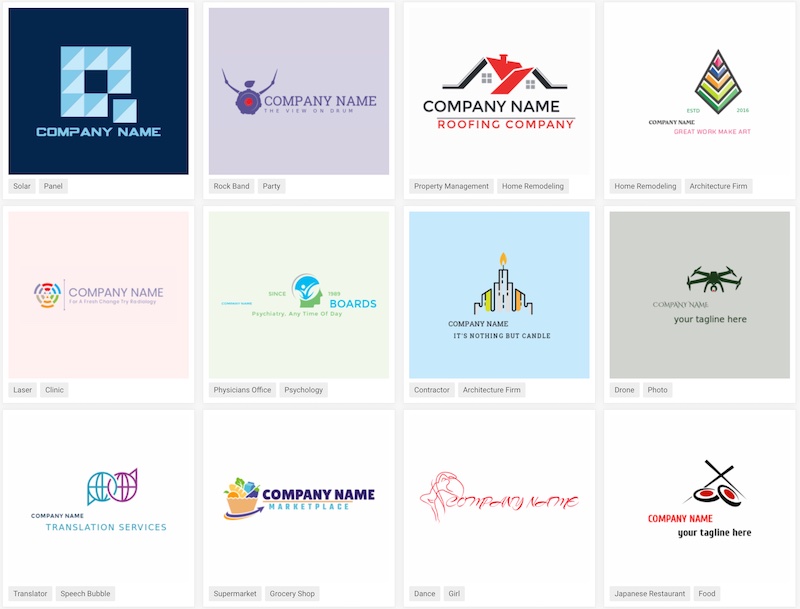A logo is the visual cornerstone of a brand's identity,
representing its essence, values, and mission. An effective logo design is more
than just an aesthetically pleasing graphic; it communicates the brand's
personality and creates a lasting impression. To ensure your logo resonates
with your target audience and reflects your brand accurately, it's essential to
follow logo design guidelines. This article will walk you through the key
principles and steps to create a memorable and impactful logo that stands the
test of time.
Top Logo Design Guidelines
Take a look at some important logo design guidelines.
1. Understand Your Brand Identity
Before delving into logo design, it's crucial to have a deep
understanding of your brand's identity, values, and mission. Consider the
emotions and associations you want your logo to evoke in your target audience.
Your logo should serve as a visual representation of your brand's essence and
communicate its unique qualities. Whether your brand is playful, professional,
innovative, or eco-conscious, your logo design should reflect these attributes.
2. Simplicity Is Key
Simplicity is a fundamental principle in logo design. A
simple logo is more memorable, versatile, and recognizable across various
mediums. Aim to distill your brand's essence into its simplest form. Iconic
logos like McDonald's golden arches or the Twitter bird demonstrate how
simplicity enhances recognition. A clutter-free design ensures that your logo
is easily comprehensible and leaves a lasting imprint in the minds of your
audience.
3. Scalability and Versatility
An effective logo design should remain clear and legible
regardless of its size. Whether it's displayed on a business card or a
billboard, your logo should maintain its visual impact. A versatile logo is
adaptable to different contexts and platforms, from digital screens to print
materials. Design with scalability in mind, ensuring that intricate details and
small elements remain discernible when the logo is scaled down or up.
4. Color Palette
Colors have psychological and emotional associations that
influence how people perceive your brand. Choose a color palette that aligns
with your brand's personality and resonates with your target audience. Warm
colors might evoke feelings of energy and passion, while cool colors could
convey tranquility and professionalism. Consider how the colors you choose
interact with each other and how they appear in both digital and print formats.
An effective color palette enhances brand recognition and shapes your brand's
visual identity.
5. Typography Matters
Typography plays a crucial role in logo design as it
communicates tone and personality. The fonts you select should complement your
brand's image—whether it's sleek and modern or traditional and elegant. Custom
typography can add a unique touch to your logo, setting it apart from generic
options. Keep in mind that readability is paramount, even in smaller sizes.
Typography choices contribute to the overall aesthetic of your logo and
reinforce your brand's identity.
6. Originality and Uniqueness
Creating a logo that stands out in a crowded marketplace
requires originality and uniqueness. Research your industry and competitors to
ensure that your logo isn't inadvertently similar to others. A distinct logo
captures attention and leaves a memorable impression on your audience. Aim to
craft a logo that's not only visually appealing but also sets your brand apart
from the competition.
7. Timelessness
A logo should have a timeless quality that transcends trends
and remains relevant over the years. Avoid incorporating design elements that
are trendy at the moment but might become outdated quickly. A classic logo
design ensures consistency and coherence in your brand's identity, making it
recognizable to both current and future generations of customers.
8. Avoid Complexity
While expressing your brand's personality is crucial, avoid
overwhelming complexity in your logo design. Intricate details might not
translate well across different sizes and platforms, leading to confusion or a
loss of impact. Strive for a balanced design that conveys your brand's message
clearly and effectively. A simplified yet powerful logo resonates more strongly
with your audience and maintains its visual appeal in various contexts.
9. Test Legibility and Recognition
Before finalizing your logo design, test its legibility and
recognizability in different scenarios. Ensure that it remains clear and easily
identifiable whether it's displayed on a website, a social media profile, a
business card, or a sign. Seek feedback from individuals who represent your
target audience to gain insights into how well your logo communicates your
brand's identity.
10. Versatility Across Media
Consider how your logo will appear across a range of
mediums, both digital and physical. Your logo might appear on business cards,
websites, social media platforms, packaging, merchandise, and more. Ensure that
your logo retains its impact and legibility across these various applications.
A versatile logo design guarantees consistent brand representation and a
seamless user experience across different touchpoints.
11. Seek Professional Expertise
While DIY logo design tools are available, seeking
professional expertise can elevate the quality of your logo design. Graphic
designers possess the skills and experience to create a logo that effectively
communicates your brand's message and identity. They can translate your vision
into a polished and visually appealing logo that resonates with your target
audience.
12. Protect Your Logo
Once your logo design is finalized, consider trademarking it
to safeguard your brand identity. A trademark prevents others from using a
similar logo that could cause confusion or dilute your brand's uniqueness.
Legal protection ensures that your logo remains a valuable asset for your
business and maintains its exclusivity in the market.
Top Logo Design Guidelines - Wrapping Up
A well-designed logo is a powerful asset for your brand,
making a lasting impression and communicating your values. By following these
logo design guidelines—understanding your brand identity, embracing simplicity,
ensuring scalability, choosing an appropriate color palette, selecting
typography wisely, prioritizing originality, aiming for timelessness, avoiding
complexity, testing legibility and recognition, ensuring versatility, seeking
professional expertise, and protecting your logo—you can create a logo that
embodies your brand's identity and resonates with your target audience. A
thoughtfully designed logo sets the foundation for a strong brand identity and
a memorable presence in the market.
Useful Links:
https://blog.adobe.com/en/publish/2017/05/16/5-logo-design-trends-you-need-to-know-about
https://www.alcobyte.com/importance-of-branding-for-your-business
http://www.zealoteck.com/branding-companies-calicut/
https://wordpress.com/go/website-building/how-to-get-an-affordable-logo-for-your-blog-or-website/




Comments
Post a Comment